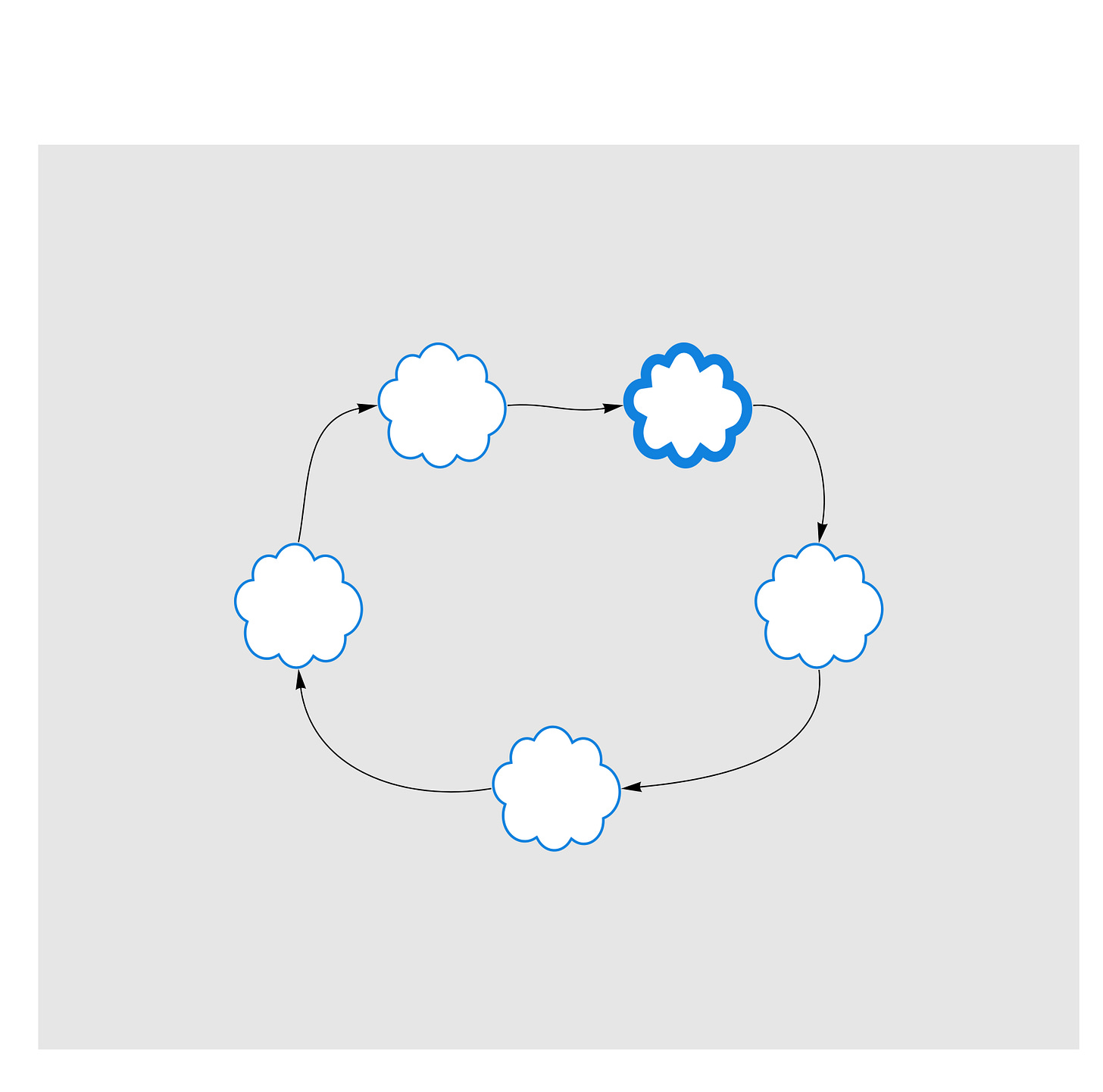Multi-product strategy is something I spend a lot of time thinking about, both for the day job and via my various side hustles. And one of the clearest articulations of how to think about additional products is this diagram from Reforge.
A couple of quick takeaways from the visual:
one key reason to add surface area to your product is to expand product-market fit (PMF)
the 3 ways to expand PMF are (a) same product, new market (b) new product, same market, or (c) some combination of (a) and (b)
I want to talk about (b) in this post.
The adjacent product circle is very ambiguous in my experience, and this is where I’ve seen many PMs get into trouble. In short, product teams sometimes get lost on whether they are building just add-on features for the current offering or truly complementary but separate new product lines. And it’s confusing because the outcomes you hope to drive (market penetration, category creation, customer mindshare) and the metrics you expect to move (revenue, retention, adoption) are the same with both types of product work.
To re-phrase the points above in a visual way…
You have a core product loop:
When you create add-on features, the intention is to improve one incremental step in the existing loop, and hopefully better complete and ultimately accelerate the loop:
But with a new product line, you’re actually creating a net-new loop that connects to your existing core product loop:
By the way, if you introduce new products that don’t conect at all to your core product, you’re building distinct but disjointed businesses, which is a post for another day.
So how do you know which state (add-on feature, new product) you’re actually in? some sniff test questions that I use:
Will pricing/packaging changes alone accomplish your intended shift? (if yes, smells like add-on)
Would the product sell stand-alone irrespective of whether customers buy your core offering? (if yes, smells like new product)
Can the product flywheel be initiated by the new product or is the core product the only entry-point? (if the latter, you have an add-on)
When churn / downsell happens, is it the entire product portfolio or do customer attempt to hang onto some pieces of functionality?
Do the product capabilities drive user stickiness (add-on feature) or user growth (new product line)? (think of this as depth vs breadth)
Can the core product team balance requests coherently or does it feel like being asked to make artificial trade-offs between 2 parallel priorities? (ideally new products are new teams vs asking core team to juggle)
The point of this post is not to say that add-on features are less valuable than new product lines (or vice versa), but it’s important to know which mode you’re in so you can set-up your operating model accordingly. When you organize for one model and try to execute another, the org design will work against you. Lastly, you sometimes don’t know early on where you stand - for example, you start building an add-on feature for what you think is your core persona and learn along the way that it’s a new product line for an adjacent persona - this is part of having a fluid point of view on the market and something seasoned PMs have to navigate.
note: I know this post is a bit overly conceptual and a real add-on vs stand-alone product story would make it more concrete - would love to get some example products from readers that I can do a teardown on…
As always, I’d also love to hear from readers about their own attempts at both add-on features and new product lines - please chime in via comments👇. And if you enjoyed this post, please consider subscribing.
update (based on reader insight / comment): “another benefit of knowing which bucket you’re in is it probably shapes the kind of discovery you focus on - in add-on you focus a lot more on how they use your product within your product and for new it’s about what they are doing outside of your product”
further reading / references
the diagram above is from this Reforge article on the different types of product work (it’s long, but I have a shorter version here which I call the 4 F’s)
I’ve previously attempted to delineate between layers of products (features, solutions, platforms) via the product tree analogy
when you truly are building new products for adjacent personas, one best practice to keep in mind is to span (vs split) personas
if you’re interested in learning more about multi-product strategy, check out my upcoming live cohort-based course here
childish drawing / interpretation









nice article Ibrahim as usual! But also abstract and difficult to tie to the real world. A couple of examples - Netflix trying games, short videos, etc. Shopify doing the Shop app, Slack doing audio huddle....
a couple more examples....stripe creating products that help its checkout customers get access to cheap capital (stripe capital?) or help startups connect with legal counsel....